#it is a consistent motivation that informs us about this character
Note
Oh god, I didn't even consider the idea of Dovewing dying in Ivypool's SE. And while Dovewing is becoming more loved, I can absolutely see the editors/writing team deciding to kill her off because of the constant hate she got- and she HAS Birchkit who could become the next ShadowClan POV if that happened too. I think the worst possible option is Squirrelflight dying both for manpain with Bramblestar and so Ivypool, being acting deputy struggles with whether or not she wants to be leader, and Dovewing dying just so we feel sorry for her. I think I'd genuinely stop paying attention to ASC if they're killed off for drama lol, unless like Ivypool gets Dovewing killed because of her rash actions and finally has to deal with the consequences of her behavior. THAT at least could be interesting and a good reason for her to doubt her ability to lead when her hot headedness got Dovewing killed, buuuuuuut given that even after she interfered with sending a rescue party for SkyClan the Erins/narrative coddle her and have everyone forgive her and justify her actions? Even if she straight up gets Dovewing killed, I can already see the book bending backwards to defend her and people acting like it's Dovewing's fault. 💀
Tigerheart and Ivypool mean nothing to me without Dovewing, even Shadowsight and Lightleap being her kids is what elevates them for me. She's just That Good. If they kill her off I'm throwing rocks!!!! I feel like they wouldn't but, you know, they have a pretty blatant disregard for their female characters and you can't be sure -_- I especially don't want her to be thrown to the meat grinder for Ivypool's arc of all things, she already has a dead daughter we don't need more mince meat relatives!!!!
AVOS!Ivypool is so frustrating, like the books have always been awful about the code stringent characters that it peddles out. People's reactions to her in Tigerheart's Shadow drove me NUTS she is not being rational, she is being controlling and petty! THAT'S BAD WHY ARE YOU SAYING SHE'S RIGHT. Characters who are controlling and needy and petty are so good....but the narrative has to play into that, it has to acknowledge it to be fun to read. Ivypool clinging onto her sister would be fun if the text didn't want to constantly remind me how noble and loving she really is because of the code or whatever. I know the two technically reconciled but like. come on.
Seeing as how I still have to wade through "Dovewing abandoned her" takes, we must band together and fight for her tooth and nail to protect her.
#deer rambles#if the narrative leaned more into how controlling she is#i'd vibe with it more#i mean it im throwing tigerheart to the wolves if she dies#dont get me wrong some of the criticism is still dumb as hell#“people reduce tiger to just dad” <- the fact he priortizes his family over his clan is a consistent trait#it is a consistent motivation that informs us about this character#his family is important to him and he will go to war for them#we need to understand that to fully understand his motvations
28 notes
·
View notes
Text
Let's talk about misdirection.
(Requested by @voiceless9000. Hope this is helpful!)
Misdirection in storytelling, through foreshadowing and other techniques, is a powerful tool that can enhance suspense, surprise, and engagement in your narrative and make plot twists more unexpected.
Remember to maintain coherence and avoid contrivances that may undermine the integrity of your storytelling.
Here are some techniques you can use to effectively misdirect readers:
Red Herrings: Introduce elements or clues that suggest a certain outcome or plot direction, only to later reveal that they were misleading. These false leads can divert readers' attention away from the true resolution.
Selective Detailing: Highlight certain details or events in a way that implies their significance, while downplaying or omitting others that might be more relevant to the actual outcome. By controlling what information readers focus on, you can steer their expectations.
Character Misdirection: Use characterisation to mislead readers about characters' true intentions, motivations, or identities. Create multi-dimensional characters who may behave ambiguously or inconsistently, leaving readers unsure of their true allegiances, motivations, or goals.
Foreshadowing: Employ foreshadowing to hint at future events or outcomes, but do so in a way that misleads interpretation. Provide clues that could be interpreted in multiple ways or that lead readers to expect one outcome while delivering another. (See my previous post about foreshadowing for more!)
Misleading Narration: Utilise an unreliable narrator or perspective to present events in a biased or distorted manner. Readers may trust the narrator's account implicitly, only to discover later that their perceptions were flawed or intentionally deceptive.
Subverting Tropes: Set up situations or scenarios that seem to follow familiar narrative tropes or conventions, only to subvert them in unexpected ways. This can keep readers guessing and prevent them from accurately predicting the story's trajectory.
Parallel Storylines: Introduce secondary storylines or subplots that appear unrelated to the main narrative but eventually intersect or influence the primary plot in unexpected ways. This can distract readers from anticipating the main storyline's developments.
Setting: Manipulate the setting or environment to create false impressions about the direction of the plot. For example, presenting a seemingly idyllic setting that harbors dark secrets or dangers.
Timing and Pacing: Control the pacing of your story to strategically reveal information or developments at opportune moments, leading readers to draw premature conclusions or overlook important details. (See my post on pacing for more tips!)
Twists and Reversals: Incorporate sudden plot twists or reversals that upend readers' expectations and challenge their assumptions about the story's direction. Ensure that these twists are logically consistent but sufficiently surprising to catch readers off guard.
Happy writing!
#writeblr#writing#writing tips#writing advice#writing help#writing resources#plot development#deception-united
2K notes
·
View notes
Text
having feelings about trans Gwen,,, like there's the 'superhero leading a double life' allegory for being closeted, which ppl have noted, but there's plenty I haven't seen anyone mention yet! like, the fact her dad has a trans patch in support of her means she's out.
She's a young trans *girl* (as opposed to a trans woman) living as her authentic gender in a loving home. she went to her school dance in a dress. she did ballet! which of course boys can do too, but often times when people are assigned male they don't get the chance to explore feminine hobbies. It's really lovely that someone, likely Gwen's dad, supported her enough to let her have those girly experiences and memories, whether she was living as a girl when she took dance up or as a gnc boy.
While it's subtle rep, I still think it's awesome to imply a character like Gwen is trans. Trans girls don't always get to have a childhood. Transmisogyny fetishizes transfems and presents them as always victimisers, never victims. They're barred from girlhood and it's connotations of innocence, vulnerability, lovableness.
Not that Gwen isn't a hashtag strong female character! And not that she hasn't had to grow up fast in other ways. She Is Literally Spiderwoman and she plays the drums and has agency and expresses negative emotions. But she's also a teenager, and she gets to be hugged and comforted, and to be set up for a soft friends to lovers relationship with another teenager, a cis boy who respects her and only knows her as a girl and thinks she's amazing and draws her in his sketchbook. That is not a role the media often lets trans girls have!!! It's lovely to think young transfems might be able to see themselves in a character consistently shown as worthy of affection.
Of course, the fact that Gwen is in the closet about being spider-woman is even sadder knowing this is her second rodeo. Lots of us have hesitated to come out a second time because our parents were supportive about the first thing and well, putting something else on them feels like taking the piss or hoping for too much.
Something else I wanted to talk about is how Gwen being trans effects a reading of her Peter's death, especially taking into account the new information this film gave us about this. There's this gendered switch happening, where Peter passes on his usual role to a woman. What's more, he has to die for her story to happen. She loves him, and never wanted him to die, but she's blamed for it anyway. Her father talks affectionately about the dead Peter, calling him his daughter's best friend. He talks about him like a son. He vows revenge on Gwen for killing him. It's a fantastic allegory for how some transphobic parents hate their out trans children for 'killing' the kid they had before.
I think with the above in mind, maybe we can see the subtext of Gwen's arc with her dad in this film as that of a supportive parent who's nevertheless got some biases left that hurt his trans daughter, who doesn't speak up for fear his acceptance is conditional.
I don't think it's a stretch to suggest that protecting a trans daughter is this Captain Stacy's motivation while he's working as a cop. Obviously there's the text that he wants to be a 'good cop' to work against the institution's bigotry, and he displays the trans flag on his work jacket. His quitting the police is a fantastic story beat because it makes a point about the real world while also serving a lot of the analogies going on.
Good cops quit. They realise you can't be a well intentioned cog in a bigoted machine. It doesn't matter if you're a bigot or just taking actions a bigot might because you're working within parameters set by bigots. It's an important message. Within a trans reading of the film, I'd also see this plot moment as Stacy realising he can't protect his trans daughter if he's still playing by the rules of a society that see her as threatening and duplicitous. He's then able to stop seeing her on some level as having killed his son.
They're able to be close again because he has completely rejected the cis culture he was a part of, rather than just decrying the worst parts and slotting Gwen in. She no longer has to worry that he'll rescind his acceptance if she's too trans, and so he gets to know all of her because she can let him into her world without self-editing.
Anyway, those are my thoughts on Gwen after watching Across The Spiderverse two hours ago lmao.
#atsv#atsv spoilers#across the spiderverse spoilers#spiderverse spoilers#spiderverse#spiderverse gwen
3K notes
·
View notes
Text
Eight Strategies for Improving Dialogue in Your Writing
Well, hi! Oh my… wow! It’s been a long time since I’ve posted! I’ve been very busy and I am genuinely sorry to all my followers, but that doesn’t mean I’ve forgotten about this account, but here is one final post for the year!
Hopefully next year I become consistent with it again!
Let’s begin!
One of the best ways to help a reader connect with your writing is by crafting excellent dialogue. Use these tips to learn how to write dialogue that showcases character development, defines your characters’ voices, and hooks readers.
Why Use Dialogue?
Good dialogue performs all sorts of functions in fiction writing. It defines your characters’ voices, establishes their speech patterns, exposes the inner emotions, and showcases their character development. Beyond mere characterization, effective dialogue can also establish the setting and time period of your story and reveal information in a way that doesn’t feel overly expository.
Authors use lines of dialogue to reveal a character’s personality and express their point of view. For instance, an archetypal football coach might speak in short, terse sentences peppered with exclamation points and quotations from famous war generals. By contrast, a nebbish lover with a broken heart might drone on endlessly to his therapist or best friend, speaking in run-on sentences that circle around his true motivations. When an author can reveal character traits through dialogue, it cuts down on exposition and makes a story flow briskly.
Eight Writing Tips for Improving Dialogue
The first time you write dialogue, you may find it quite difficult to replicate the patterns of normal speech. This can be compounded by the concurrent challenges of finding your own voice and telling a great story overall. Even bestselling authors can get stuck on how a particular character says a particular line of dialogue. With practice and hard work, however, lackluster dialogue can be elevated to great dialogue.
Here are some strategies for improving the dialogue in your own work:
Mimic the voices of people in your own life. Perhaps you’ve created a physician character with the same vocal inflections as your mother. Perhaps your hero soldier talks just like your old volleyball coach. If you want to ensure that your dialogue sounds the way real people speak, there’s no better resource than the real life people in your everyday world.
Mix dialogue with narration. Long runs of dialogue can dislodge a reader from the action of a scene. As your characters talk, interpolate some descriptions of their physical postures or other activity taking place in the room. This mimics the real-world experience of listening to someone speaking while simultaneously taking in visual and olfactory stimuli.
Give your main character a secret. Sometimes a line of dialogue is most notable for what it withholds. Even if your audience doesn’t realize it, you can build dynamic three-dimensionality by having your character withhold a key bit of information from their speech. For instance, you may draft a scene in which a museum curator speaks to an artist about how she wants her work displayed—but what the curator isn’t saying out loud is that she’s in love with the artist. You can use that secret to embed layers of tension into the character’s spoken phrases.
Use a layperson character to clarify technical language. When you need dialogue to convey technical information in approachable terms, split the conversation between two people. Have one character be an expert and one character be uninformed. The expert character can speak at a technical level, and the uninformed one can stop them, asking questions for clarification. Your readers will appreciate it.
Use authentic shorthand. Does your character call a gun a “piece” or a “Glock”? Whatever it is, be authentic and consistent in how your characters speak. If they all sound the same, your dialogue needs another pass.
Look to great examples of dialogue for inspiration. If you're looking for a dialogue example in the realm of novels or short stories, consider reading the great books written by Mark Twain, Judy Blume, or Toni Morrison. Within the world of screenwriting, Aaron Sorkin is renowned for his use of dialogue.
Ensure that you’re punctuating your dialogue properly. Remember that question marks and exclamation points go inside quotation marks. Enclose dialogue in double quotation marks and use single quotation marks when a character quotes another character within their dialogue. Knowing how to punctuate dialogue properly can ensure that your reader stays immersed in the story.
Use dialogue tags that are evocative. Repeating the word “said” over and over can make for dull writing and miss out on opportunities for added expressiveness. Consider replacing the word “said” with a more descriptive verb.
900 notes
·
View notes
Text
The ambiguity of the Wittebane storyline is like. The entire point. We only know surface-level details because that’s all Philip lets himself even think about. We aren’t supposed to know exactly how to feel or exactly what Philip feels about it because he does not acknowledge or express his thoughts/feelings about it. Because to do so in an honest way would mean coming to grips that it wasn’t a black and while situation like he wants to believe it was. And if that’s the case then his entire worldview, sense of purpose, and sense of self fall apart.
That’s how rationalization of bigotry happens: if you need yourself to be the hero no matter what you do, there is by necessity a disconnect between your reality and your experience/interpretation of reality. You aren’t a good person because you do good actions; instead, your actions are good no matter what they actually are because you, a Good Person™️ are doing them, and Goodness and Badness of a person are predetermined based on inherent qualities (i.e. being born human). This type of worldview requires no self-reflection, and in fact actively discourages it. (Luz questions/doubts herself consistently; Philip does not).
So of course we don’t know everything about the Wittebane story: the only person who even holds that information is Belos, and even he doesn’t acknowledge it. It doesn’t even really matter if he feels bad about killing Caleb or knows deep down that he might be in the wrong: he doesn’t let that guilt inform his actions, nor does he express it. The protagonists certainly don’t know about it, they only have his actions to go off of. And his *actions* give no hint of remorse nor do they indicate he ever intends to change course. We the audience do know a bit more than even Luz does about his backstory, and that’s because it’s for us—it fleshes out the story and drives fan discussion/interpretation, and that’s a good thing! But in this particular story the protagonists didn’t need to know everything about the antagonist’s backstory/motivations because the antagonist did not make it relevant to them. And yes, Doylist perspective and everything, this was an external writing choice made by real life people and not the character. But like. IMO it was the correct choice to make for this story!
#another thing to note is like. the story is very much not from his perspective#the fact that we even got the ghost caleb scene was a delicious little treat for the audience#I think we would’ve gotten a bit more with a full length third season but. it probably would still have been pretty ambiguous#the owl house#lunar rambles
344 notes
·
View notes
Text
Young Royals and the three act structure, Part one
Seems like there was some potential interest in a full three-act story structure analysis, so I’m taking this opportunity to indulge myself by going full nerd. I’m going to attempt to make the argument that limiting the show to three seasons is actually perfect for Young Royals, by highlighting the pattern the story follows.
A few things to keep in mind before we start.
This analysis is not about the characters deep inner emotional lives. We are not here to pass judgment on their actions. We are simply identifying the beats of the story in a neutral and objective manner, for the purpose of analysing the structure of the story.
As you will notice, the points I have identified are all from Wilhelm’s perspective. That’s because he’s the point-of-view character, the main conflict is shaped by him and his emotional state. He’s the protagonist. Each subplot however, will follow the same pattern and has its own purpose, but I’ll get more into that another time.
I’ll be referring a fair bit to Lindsey Ellis’s video essay on the subject, because I like how she describes the structure pattern in sequences. So I’m gonna borrow some of her language. Also, note that the examples she uses to describe the tree-act structure are all feature films. Since Young Royals is a series, it’s gonna divert slightly from her description. But that’s what is so great about this structure, it’s flexible. It’s not meant to be set rules, but rather guidelines to help keep your story relevant and engaging all the way through. If you find this stuff interesting, I’d highly recommend watching her videos!
The three act structure is absolutely not the only way to tell a story. There’s many different formats that works just as well! It’s really about finding what structure works best to tell your story. The three acts however is the most common format you’ll find in more commercially viable works, such as Disney films for example.
And finally, I’m not a writer, but an animator, and I have studied film theory/structure. I’ll do my best to motivate the plot points I’ve identified, but if you’re a proper story expert and disagree with me, I’m happy to discuss!
Okay, let’s get to it.
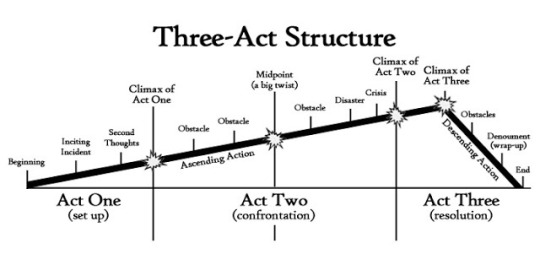
A three-act structure is constructed of just that, three acts, and roughly looks like this. Essentially, a beginning, a middle, and an end. Or the set up, the confrontation, and the resolution. These acts may vary in length, act two usually being the longest and act three usually being the shortest. But what truly defines them is the tension of each act, meaning what drives the conflict forward at that point. A story will have a main conflict yes, but that conflict will take on many forms depending on where we are in the story. Lindsey Ellis describes each act as consisting of multiple sequences, and defines each sequence by its individual tension as well. Though all points of tension should always stay related to the main conflict! So the main points we’re looking to identify in the story are the main act tensions and the main sequence tensions.
Let’s go through season one of Young Royals and talk about each story beat.
Act 1
Act tension - Wille has to attend Hillerska.
Sequence 1
We start with the Set up/Hook. The purpose here is to establish the world and the protagonist along with their internal conflict, such as their flaws and/or desire that makes them feel incomplete - The way Wilhelm’s character is introduced informs us that he is royal, but struggling with his role, because royals have set rules to follow.
“Why can’t I decide how the hell I want to live? I want to live a normal life!”
The thing that sets the story in motion is the point of attack. Something happens that is outside of the protagonist's control/knowledge - That would be the royal court deciding to send Wille to Hillerska without his permission. This gives the protagonist something to react to.
Sequence tension is established - Wille does not want to go to Hillerska. The rest of episode one reinforces Wille’s discomfort at the school.
Next, we get to the inciting incident. An event that disrupts the status quo, and our protagonist has to get involved - The initiation party, particularly when Wille and Simon almost kiss at the end. This leads him to acknowledge his attraction toward Simon and become more proactive in his pursuit of the boy.
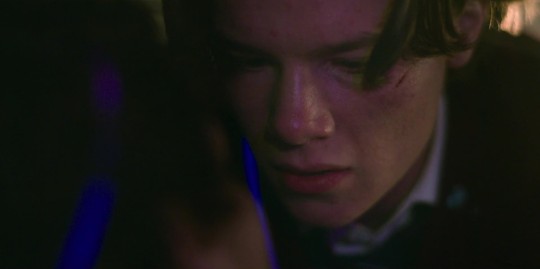
The sequence tension is resolved. Notice how in episode two, Hillerska is no longer the main focus for Wille, but Simon is. The seeds for what will become the central conflict have now been planted. The conflict is usually driven by character motivation. This is where we can consider the protagonist's Want vs Need. The want drives the main tension - Wille wants to be with Simon. But we’ll find want he needs later on in the story.
Sequence 2
The purpose here is to build up the creation of the main tension of the story. The main antagonist can also be established here - August keeps getting on Wille’s nerves. Especially when he’s trying to hang out with Simon.
That’s our sequence tension - Wille is working to befriend Simon, but August keeps getting in the way.
The end of the sequence sees the first major plot point, the Lock-in. Where our protagonist makes a decision that changes everything. Usually, something they can’t come back from - In Young Royals that would be the first kiss. Wille and Simon’s relationship has fundamentally changed. The main tension is now established.

Act 2
Act tension - Can Wille be with Simon, despite him being a prince?
Sequence 3
At the start of this sequence, the protagonist has most likely achieved some kind of milestone or learned something - He’s definitely like that.
To keep the story interesting, writers will add so-called pinch points in between the bigger plot points. These usually act as reminders of the antagonist or the pressure our protagonist may feel - Wille feels he needs to break it off with Simon because a prince is not supposed to be gay. As we established in the set up, royals have rules.
Sequence tension - Can Wille deny his feelings for Simon? Queer pining ensues.
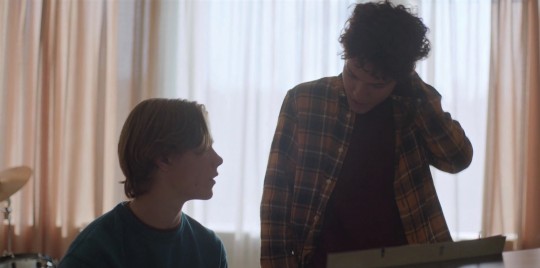
Sequence 4
The purpose of this sequence is to build up towards the midpoint. We see the protagonist making attempts to achieve their goal - The want never changed, Wille still wants to be with Simon, despite the pressure. Wille invites him to spend the weekend with him.
Sequence tension - Wille is trying to prioritise his new relationship with Simon, but August is still being annoying.
Then the midpoint hits. A major disruption, either from a character action or a force of nature. Can be positive or negative, just something that changes the aim of the quest without resolving the main tension - This time it’s literally halfway through the season. End of episode three, Erik dies and Wille becomes the crown prince. Everything has changed.
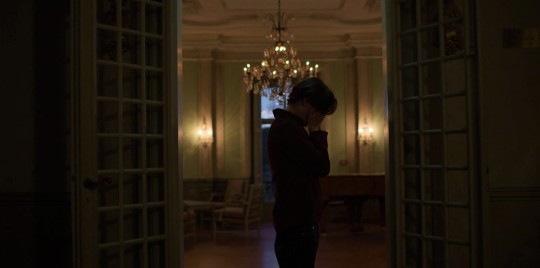
Sequence 5
Everybody has to adjust to the new world order after the midpoint disruption. We’ve reached another pinch point - Again we are reminded that royals have rules, and Wille makes another attempt to follow those rules. By embracing his new role, he breaks up with Simon once again, then sort of pursues Felice and joins the society.
Sequence tension - Wille adjusting to his new title while mourning his brother.
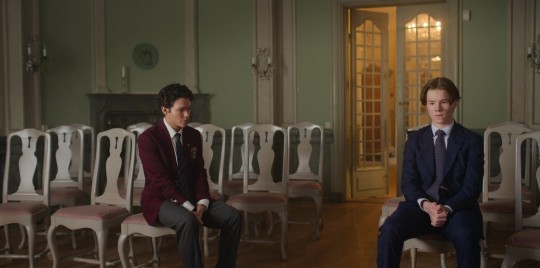
It’s common for subplots to advance around this time - Like Simon giving August the drugs to sell.
Sequence 6
Another plot point, where our protagonist may stop and reflect. Maybe have a heart-to-heart with another character, and perhaps make a decision - This is where we see the football field scene and the end of episode four. Wille reaches out to Simon for help, reconnecting with him. This leads them to pursue a relationship once again. They are put in a false sense of security. They are finally together, thinking all is good. BUT, we in the audience know that August has the video of them and the writers keep reminding us of him and the threat he poses. Even if Wille and Simon don't know it yet.
Sequence tension - Can this happiness last?
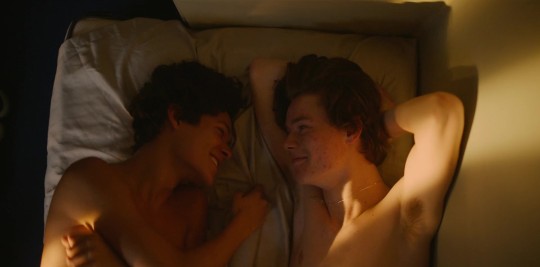
Sequence 7
(Here’s where the story leaves the classic structure for a bit, and adds an extra sequence for some more drama, as filler. In theory, they could have skipped this sequence and gone straight to the video being released. This part is mainly here to give motivation for August’s character, making his actions clearer)
So we are essentially given another pinch point, a reminder of antagonist or pressure - August tries to break them apart by telling Wille about the drugs, which leads to the music room fight.
Sequence tension - August is becoming more hostile.
Wille saving Simon from being framed for the drugs is more related to August’s money subplot. And the Lucia hug scene is mainly there for character building purposes. I’ll talk more about that stuff in part two.
The plot has advanced to the culmination of the main tension. The crisis that serves as build-up to act three - August releases the video. At the end of act two, the protagonist faces their biggest challenge yet. They’ve hit their lowest point - The aftermath of the video's release and Wille is totally lost.
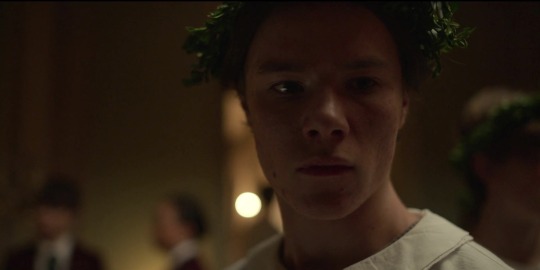
Act 3
Act tension - Can they save their relationship after the video?
Sequence 8
Begins with the protagonist making a big decision that creates the new act tension. The tension in act three will be different, but still related to the main conflict - Wille and Simon talk in the locker room, where Wille says he won’t do the statement.
Sequence tension - Can Wille avoid making the statement?
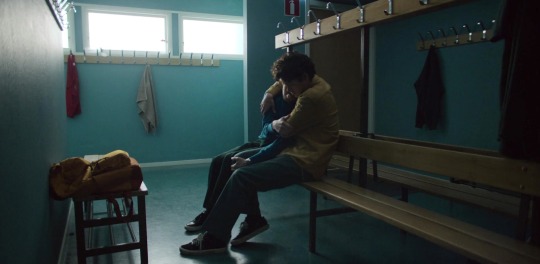
We’ve reached our last major plot point, located at the end of the sequence. Sometimes known as the twist in the third act - And what a twist, Wille does the statement anyway. This narrows down the tension further, to focus on a more character-driven intimate place for the next sequence.
Sequence 9
Sequence tension - Can they be together despite the statement?
Climax, the last big fight - Simon tells Wille off for being selfish and breaks up. Wille also finds out that both August and his mother betrayed him. The protagonist’s need has emerged from this journey and is now clear to us - Wille needs to decide who he wants to be. The want and the need should be different from each other, but still connected. Wille wants Simon, but in order for that to happen, Wille needs to break out of this cycle of self-preservation and stand up for himself against the royal court.
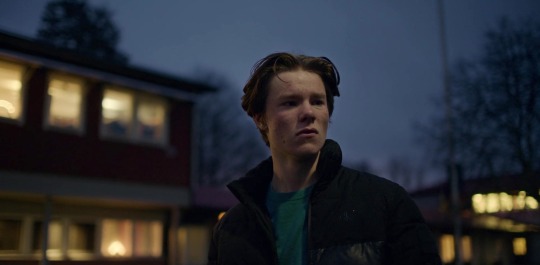
The climax will most likely lead to some kind of character growth - Wille is now pissed because he’s lost everything and realizes how corrupt the royal court is. As Lisa so beautifully put it, “A flame is ignited in him”. Hugging Simon in public is a display of his character growth.
And finally, Resolution. The point where the story is usually wrapped up neatly, but if left ignored, you get a cliffhanger - Which is exactly what happens in this season. Nothing is properly resolved at this point. Resulting in an open ending/cliffhanger.
Oof, that was a lot. How are we all doing? So these are the main beats of the plot. Makes sense? Let me know if you need any further clarification 😅 I was gonna get into how the rest of the show fits this format as well, but that’ll have to be in a separate post. Here’s part two!
#young royals#prince wilhelm#young royals analysis#young royals season 1#film theory#story structure#story analysis#young royals and the three act structure#wilmon#simon eriksson#august horn#my meta#my analysis
239 notes
·
View notes
Text

The antis have been all over my posts in the last few days, so I wanted to share my experiences and write a guide on how to deal with them.
First off: Our ships and character preferences are valid, no matter how hard some people try to demonize them. We are part of fandom and allowed to post about the things we enjoy, just like everyone else. Our fanfics, fanart, video edits, photo edits, etc. are all works of love and they deserve to exist and be explored by others.
✨ Strategies for dealing with antis ✨
Don’t engage. I have checked the bios of all the antis that left comments under my posts, and the majority of them are minors. You don’t want to talk to minors in fandom spaces!! And a conversation based on logic or reason won’t be possible either.
Delete their comments. Tumblr, Instagram, TikTok, and YouTube allow you to delete comments, DO IT!! You created something with love and hateful comments have no place underneath it. Even if the comment just makes you uncomfortable and isn’t outright hateful, it is perfectly reasonable to delete it for your own sanity.
Block generously. Not only the people who target you specifically but also anyone who engages in character- or ship-bashing. People who do that for one ship will do it for other ships too and it’s extremely bad fandom etiquette. When you see a character or ship-bashing post, block everyone who liked it and then the poster.
Report people for harassment. The rules vary by site, but especially threats of violence should be reported. Also, if someone follows you to another social media site after you’ve blocked them, that is called block evading and you should report that too.
When you see other people getting hateful comments underneath their posts, leave a nice comment to offset some of the negativity. Your being supportive can make the difference between this person never posting again and them being motivated to keep going. People are always welcome to send me links to a post that is getting targeted by antis and I’ll like it and leave a nice comment. 🥰
Don’t let the bad comments outshine the positive ones! Every time my post gets enough traction for antis to find it, it also gets lots of lovely reactions. Many people have told me that my content and recommendations made them ship my OTP, and that is the single thing that makes me happier than anything else. Take a screenshot and look at these kinds of comments when you feel down. This is the real reason you should keep posting.
Most hate comments are exceptionally uncreative. It helps to laugh about it, preferably with a friend. ✨ Remember, you used your energy to create something and you should be proud of it!
When you see a creator you like, but they also display obnoxious behavior towards people who like other ships, characters, or dynamics, at the very least don’t give them a platform by sharing their posts.
Stay safe. Don’t post personal information online.
It’s completely valid to step away from social media for some time. Private your accounts, turn off notifications, do a canon reread, read some fanfics in peace. Whatever it takes to remind you why you love the things you love.
Bonus Tip: Watch videos of cute animals to destress. Bunnies nose-booping each other can (and will) cure anti-induced anxiety. :)
✨ Platforms sorted by least to most toxic and my advice for using them ✨
1. Discord
Discord is great because you can join servers specifically for your favorite characters and ships. If a server doesn’t already exist, consider setting one up! Pro tip: only invite people that have positively interacted with you in the past. A small server consisting of nice people is a lot more fun than a large server consisting of members that can’t get along or are only marginally interested in the topic.
Fandom Discord servers have clear guidelines on what you can post. As long as you follow the rules, people have no grounds for calling you out. In my experience, moderators are quick to respond to harassment.
When you join a server and you see they heavily restrict certain types of content, it is a red flag. Proceed with caution, even if you plan to only talk about “safe” characters and ships.
2. Tumblr
I have rarely gotten hateful comments on Tumblr, and the few times I did they were easy to delete.
A lot of the older fandom generations use Tumblr and they are more mature and accepting of all kinds of content.
3. Twitter
Twitter makes it easy to curate your own fandom experience. You can mute words you don’t like to see on your timeline, mute and block users, and most people have their ship preferences in their bio.
4. Instagram
My Instagram posts about Jadecest get a lot of positive interaction, even more than on Twitter. There are unpleasant comments once in a while, but they are easy to delete.
Blocking a user will delete all their comments from your posts.
5. YouTube
People who don’t like your ship will downvote your videos and downvotes lead to the algorithm not recommending your videos.
I have gotten a few negative comments, but they are easy to delete.
6. Reddit
When you post in a fandom subreddit, everyone will see the post, independent of their ship preferences.
There are a lot of minors on Reddit.
You can’t delete comments.
Most fandom subreddits are poorly moderated.
7. TikTok
I have gotten the most hate comments on TikTok. They can be filtered or deleted, but antis interacting with your video by leaving hate comments will lead to the algorithm recommending your content to even more antis. It can get very ugly.
If you post on TikTok consider turning off comments, stitches, and video replies. You can also mark your content as 18+, so it won’t get recommended to minors. (Again, antis tend to be underage.)
Platforms are more toxic the more they show your content to people outside your bubble. Discord, Tumblr, and Twitter keep your content relatively well contained to your circle of friends. Reddit, TikTok, YouTube, and Instagram heavily promote your content outside your bubble, which is good, because more people are going to see it, but also bad, because it reaches more antis.
~~~
Antis are loud and obnoxious, but it’s important to remember that they are a minority. Ship and let ship still exists, especially among the people who have been in fandom spaces for more than just a few years. Don’t be afraid to post your content and express your love for your favorite characters and ships! I, for one, would love to see your creations, and many other people would love to see them too.
What are your experiences and strategies for dealing with antis?
#fandom#mdzs fandom#proship#proshipping#fanfiction#reading fanfiction#writing fanfiction#fanfic#fanfic authors#ship discourse#pro fiction#anti harrassment#ship and let ship#pro ship#anti anti#fan creations#ao3#fandom discourse#fandom discussion#fandom psa
297 notes
·
View notes
Note
🌨How to write in POV's?🌨
Choosing the perspective from which to tell your story is one of the most crucial decisions you’ll make as an author. Opting for multiple points of view (PoVs) can offer depth, diversity, and a panoramic view of the narrative that can captivate readers. Juggling multiple PoVs requires a deft hand and a clear plan. In this post, we’ll explore some effective strategies for writing a novel using multiple perspectives.
What is a point of view?
Point of view serves as the narrative’s eyes and ears—the viewpoint from which readers engage with your story. It can range from the intimate “I” of the first person, the rarely used direct address of the second person, to the more distanced and flexible third person (which can be limited to one character’s perspective or be omniscient, seeing into the minds of all characters).
Incorporating multiple PoVs means weaving a narrative through the lives and experiences of two or more characters, often alternating between their perspectives with each new chapter or section, which can enrich the story with complexity.
Choose your characters wisely
When writing a multi-PoV novel, it’s important to pick your characters carefully. Make sure that each one has a unique voice and their own way of seeing things. Each character should add something special to the story that no one else can. Also, think about how each character will change over time and how their stories connect. This will help your readers get to know your characters better and keep the plot interesting.
Map out your story structure
Planning your story’s framework is a crucial step in a multi-PoV novel. Start by outlining the individual plot lines for each character, making sure they fit well together and are interesting on their own. Decide how much time to spend on each character and keep it balanced to keep the reader engaged. Also, think about the order you introduce each character’s PoV, as this will affect how the story feels and builds suspense. Good planning will help you weave together the different viewpoints into a coherent and interesting narrative.
Create clear transitions
Clear transitions are key to a smooth reading experience in a multi-PoV novel. They guide the reader seamlessly from one character’s perspective to another, without confusion. Using character names or other distinct markers in chapter headings can help signal a shift in PoV. Consistency in these transitions is vital; once you establish a pattern, stick to it throughout the story. This consistency helps the reader quickly adapt to changes in perspective and maintains the flow of your narrative, ensuring each transition contributes to the depth and progression of your story.
Deepen characterisation through PoV
Utilising multiple points of view can deepen characterisation by allowing readers inside the minds and motivations of various characters. To maximise the impact on the overall story, ensure that each PoV shift adds new information, advances the plot, or reveals key character dynamics, helping to create a tapestry of interconnected stories and themes. By presenting internal thoughts and diverse perspectives on events, each PoV can offer a unique insight into the narrative, building a richer, more textured story.
Ensure each PoV advances the plot
In a multi-PoV novel, it’s essential that each point of view contributes meaningfully to the forward momentum of the plot. Avoid filling pages with scenes that do not serve the story’s progression or reveal significant information. Link the characters’ stories through shared events, underlying themes, or relationships. This approach ensures that every narrative perspective not only enhances the depth of your characters but also keeps the reader engaged with a plot that is continuously moving and developing through each character’s eyes.
#pov#multi pov#writer#writers#creative writing#writing#writing community#writers of tumblr#creative writers#writing inspiration#writing tips#writerblr#writeblr#writing advice#writing resources#writers on tumblr#writers and poets#writblr#writers corner#quick writing tips#tips for writers#help for writers#writing help#helping writers#advice for authors#let's write#how to write#writing asks
78 notes
·
View notes
Text
A Trapezoid of Foils: Judai/Yubel and Amon/Echo

I'm back on my bullshit, and my bullshit is yelling about the trashfire that is Judai Yuki and Yubel. This post is a collection of thoughts on how Amon and Echo were clearly meant to reflect Judai and Yubel in some way or other, and how it feels like it should be neater than it is. The parallels are there, but it's not fully symmetrical and some of the angles are kind of weird...so yeah, kind of like a (non-isosceles) trapezoid!
(Geometry Tumblr do not @ me, I'm doing my best with this metaphor)
Spoilers for GX season 3, naturally. I haven't said it before, but for this post as well as previous ones I'm basing all information and characterization on the sub version of GX rather than the dub (which drastically changes Yubel's backstory and motives).
Yubel and Amon
This is the most obvious one, because Yubel spends two whole episodes and honestly some of their most iconic monologues trying to tear Amon down after building him up the whole season.

They're both antagonists willing to cause harm to the one they love for their goals. For Amon, that goal is the power to build a utopia. For Yubel, the harm is the goal - or at least, the metric by which they will have achieved their goal (showing their love for Judai).
Yubel, of course, claims that Amon is more selfish in his use of harm. Pain is love in their philosophy, but it's mutual pain - dishing out the pain without taking any back would only be mere cruelty. This of course misses the nuance that Echo wanted Amon to use her as a sacrifice, while Judai didn't welcome any of Yubel's twisted affections.
Still, from what I've seen most people agree that Yubel comes across as more "honest" one way or another. And to understand why things feel that way, it's important to look at their backstory and motivations, as well as how their motivations change.
Yubel dedicated themself to Judai's past life, tying themself to him through lifetimes, and in the present remained true to that devotion in unwanted ways. When Judai sent them to space and it ended up being Oops! All Torture, Yubel developed their sadomasochistic philosophy as a coping mechanism and an attempt to reconcile Judai's past promises and present actions.
Upon their return to Earth, they planned to return the "favor": by sending Yubel to the pain and isolation of outer space Judai made them stronger (i.e., infected by the Light of Destruction, with all that entails), so they'll give him his own painful experience (all of season 3) to make him stronger (awaken his power as Supreme King). Then they'll reunite, having both demonstrated their love for each other, and [this part is where the Light of Destruction really twists up their thinking]. Everything they do is in the name of this motive*, whether Judai really likes it or not.
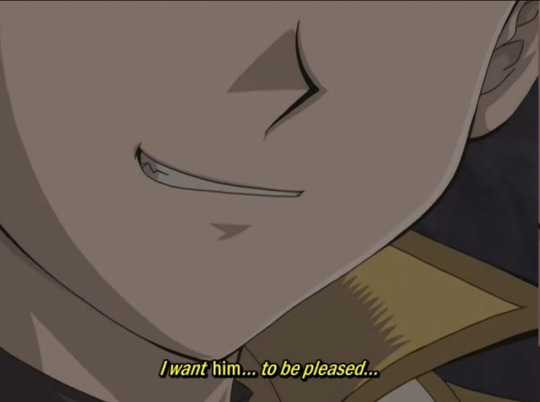
Amon dedicated himself to the Garam conglomerate with Echo by his side before being replaced by his younger brother Sid, the sole blood Garam sibling. He nearly murdered Sid before changing his mind and dedicating himself wholly to his brother instead, a decision Echo and Yubel both describe as willingly chaining himself to their service. Even when given an opportunity to become the heir (all it'd take is watching his brother die to illness, not even murder) he rejects it, and begs for a way to save him.

And yet, when when given the opportunity he made a deal with the devil to break the chains he put on himself and abandon that same family. Then when he gets the chance to obtain power by sacrificing someone he loves, he does exactly that. Then he plans to become king of a utopia free of suffering, and always remember Echo.
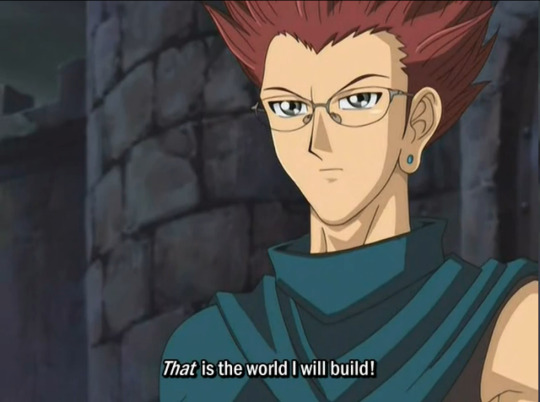
So then, what are Amon's motives? Is he somebody who got tired of being abandoned or unappreciated? An ends-justify-the-means idealist? Just a power-hungry hypocrite? It's hard to tease out a consistent character and ideology from him. And in a show where people wear their hearts in their decks, I think this part of why people hate him - and so does Yubel.
Yubel hates Johan because he's terrifyingly like Yubel in some ways, focused and protective and dear to Judai.** Yubel hates Amon because he can't be like Yubel at all, resenting the brother he dedicated himself to and sacrificing the person he loved for power in an empty world forever devoid of that same person.

No way Yubel can be that kind of person, right? Otherwise, what was it all for?
* To be fair, you don't know all of Yubel's backstory by the time of their final duel with Amon. However, even removing the context of their past life that duel together with Yubel!Johan vs. Hell Kaiser establishes Yubel's central motivations more coherently than they do Amon's.
** Help, I know there's been other essay segments on this topic, text and video alike. But I saw a lot of them back in early 2023 when I was mindlessly going through GX material in a haze of hyperfixation and now I've forgotten all the other good sources.
Yubel and Echo
If Yubel's parallels with Amon are about their dedication, Yubel's parallels with Echo are about who they're dedicated to. Both believe in their loved one's destiny to become a king, and take actions to make them that king.
Yubel has historical basis in that Judai is quite literally the Supreme King, bearer of the gentle darkness. To help him achieve that role, Yubel enacts a plot to break Judai until he awakens his Supreme King side. It fits neatly into their schema of things: this is how they make the person they love stronger, so that they will thrive and survive. Make Judai stronger and awaken his old power, and all will be as it was meant to be.
Echo just believes that Amon is amazing enough that he would make a better king than anyone. When the chances arises to help break his chains and give him a world to rule, Echo takes it.
...And boy does she.

Both Yubel and Echo believe their loved ones are meant to be a king. Both give their lives in support of their loved one, and become weapons wielded in their service.
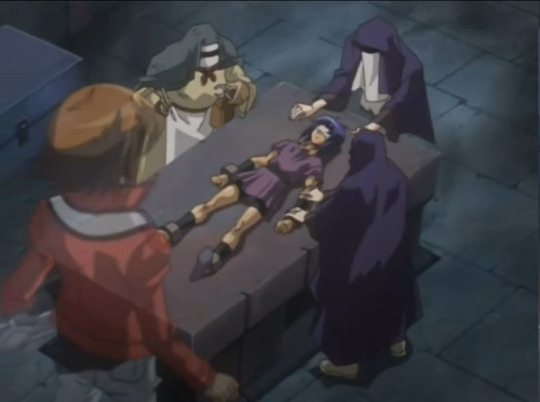
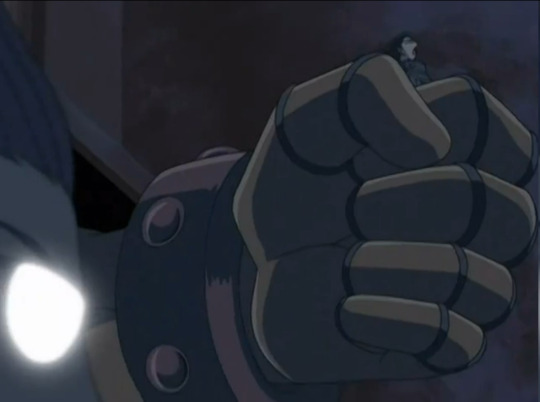
No wonder Yubel was shaken by Echo's devotion remaining within Exodia for just a moment - it's not all that far from their own.

Unfortunately Yubel's only direct interaction with Echo is goading her attack on field-Yubel during the final Amon duel. Otherwise they only speak of Echo as someone used and abandoned by Amon - which in itself has potential, given Yubel's own feelings about Judai sending them away.
I think GX could definitely have explored this connection a bit more. There's space to fill here.
Judai and Amon
As noted above, Judai and Amon both have roles as kings - at least, in the eyes of their single most loyal people. Judai holds the title of Supreme King as the wielder of gentle darkness, and while not confirmed his past life sure looked like a prince. Amon simply has ambition, talent, and an ideal world in his mind.
And in operating with the ambition of kings, they both do terrible things to achieve power. Judai lays this out explicitly in the Edo vs. Amon duel:
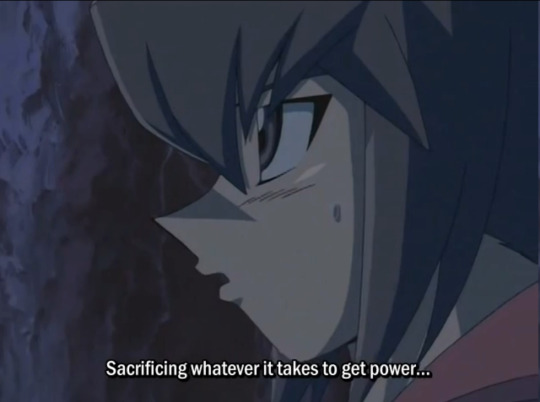

Amon lets his need for power get in the way of his other relationships and priorities, and sacrifices the ones he loves to obtain Exodia similarly to how Judai sacrificed his friends and eventually uncountable innocents for his own goals - finding Johan, and then ruling as Supreme King. Straightforward, right?
But I think there's another parallel between the two that's a lot more interesting. Or...most of a parallel. Namely, their relationship with their other halves and the responsibility of a loyal follower who would give up anything for you, be it their life or their humanity.
What do you do when the person you love most dedicates their existence to you - to the point of throwing everything else away, even their very life?
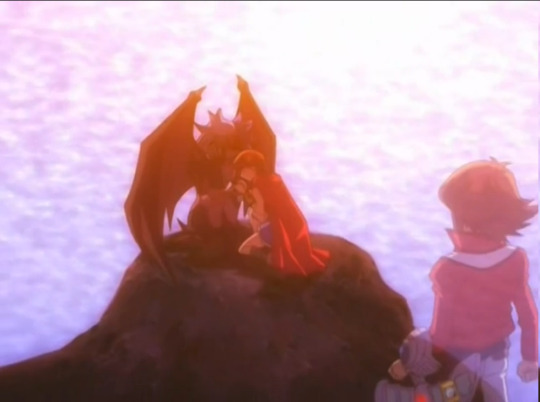
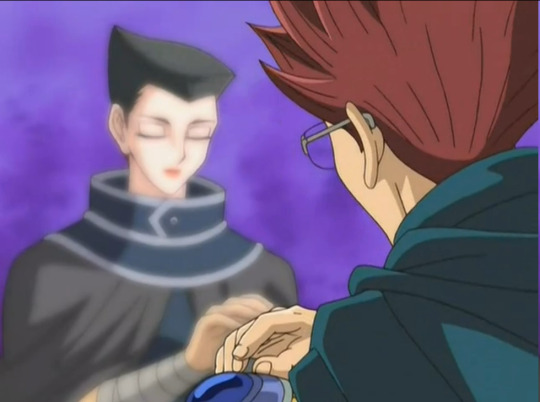
Of course, the Judai-Yubel and Amon-Echo situations aren't exactly the same even putting aside the issue of reincarnation. (For the purposes of this essay I'm not making huge distinctions between Judai and his past life, but if you want to get into the details I've written about that previously.)
Yubel went ahead and made their sacrifice without Judai's input, and all he could do was decide how to respond. He chose to dedicate himself back to them so hard it crossed lifetimes, so hard he chose to risk his own existence for them as well in his next life.
Amon, on the other hand, is the one who proposed Echo sacrifice herself for him. Echo agreed to it, and even by the end she stood by her decision. But Amon loaded the gun and pulled the trigger.

He tries to honor her sacrifice, of course. He's always mindful of Echo's sacrifice and what it means. But in the end, he did choose to sacrifice her, ultimately using her as a pawn. Their love never trumped his own objectives.

And I think the example of Amon and Echo leads to the question: if Judai had the choice of letting Yubel become a dragon or stopping them, what would he do? When it was explicitly their will?

This is another missed opportunity, one that could have solidified the parallels neatly. But GX never asks that question, so the answer is unclear. What could have been a parallel is just kind of...askew.
Judai and Echo
Okay, I admit there isn't a lot here off the top of my head. Probably the best parallels between them are in relation to their other halves, as the people "harmed" by their villainous partners, and how they respond to that harm.
Judai rejects Yubel's torments as unwanted attention, until he remembers the past and flips to understanding why Yubel did they did and makes moves to unite the two of them forever. Echo, meanwhile, understands Amon's motives from start to end and...lets herself be sacrificed, the end.
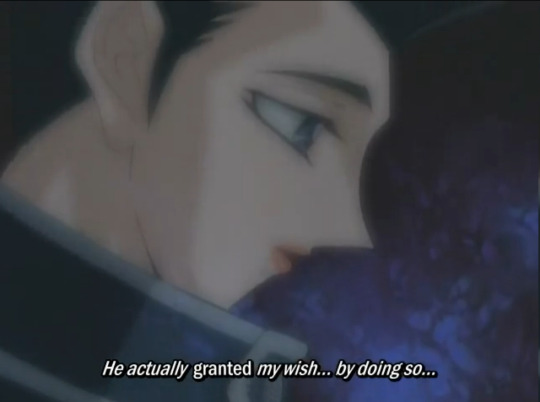
I don't know about this one. Really, ultimately Echo is supposed to be a willing participant in her own sacrifice but in the end I still don't feel like the narrative gave her a strong sense of agency in the matter and it really weakens my attempt to write this section.
In Conclusion
Some of these connections are stronger than others for sure, but I argue that they're all there in some way or another. They're very uneven and overall I'm not entirely sure what you're meant to take from the parallels, and I wish I could give something neat and concise for this section. Instead, it's a bit messy and misshapen - hence, the trapezoid metaphor.
Still, I think there's interesting room for thought in this awkward space. I was certainly thinking about these parallels while working on the latest chapter of Need (accidental last-minute plug?) and trying to figure out exactly what the prince felt while Yubel was in the middle of dragon surgery. What must it be like, to be in these relationships of sacrificial devotion?
#yugioh gx#yugioh series#judai yuki#yubel#amon garam#echo#essaying#meta#analysis#once again thanks to kaiowut99/GymLeaderLance99 for the subs#they're being used for a good cause?#anyway here's the product of me thinking too much about yu gi oh gx season 3#and all things yubel related#i am so on my bullshit
44 notes
·
View notes
Text
I’m going to voice my opinions on G1 Elita One here for a reader asked me this on ao3 at my fic Heroic Nonsense. I want to keep a record here as well for my future references and maybe find someone with similar ideas. So I still decided to use tags for content classification. Anyone who might feel irritated about me deconstructing this character may leave. But if you resonate with me or are interested in my analysis feel free to discuss.
I guess my view on G1 Elita One is basically negative, both in terms of her characterization and her representation of women.
If we genuinely talk about characterization, I think G1 Elita One is a very one-dimensional and uninteresting character. Because: 1) She doesn’t have a consistent personality or motivation of doing things. Of course you can say that her motivation is to save her boyfriend and lead the “femme bots”, but these don’t look natural, with the lack of a background story. She looks like a puppet squeezed into the show to be the protagonist’s girlfriend.
2) Also about her role. I feel that Hasbro made Elita One a shadow of Optimus Prime, giving her exactly the same position and constantly stressing her importance, when actually she contributes zero to the overall plot development. The “femme bot squad” in the show is an awkward duplicate of the male team, with every femme bot assigned to the male bot at the same position as their girlfriend/love interest(Elita One—Optimus Prime-leader, Chromia— Ironhide-second in command). I do not know the reason why “femme bots” in the play need to fight alone, and I do not know why Elita One is the leader except the fact that she is Optimus’s girlfriend. So what is the play implying by making such a character? Honestly I think this is even worse than having no female characters in the play.
3)Her plot is totally predictable. It’s a classic Hollywood hero-saves-damsel in distress story. From the moment when Alpha Trion asked her to go on a mission on her own (for what? Why? Till today I still think Alpha Trion is doing this simply because he is an avatar of the playwright) I know she will be caught and rescued by Optimus Prime. Such stories are easily guessed and easily forgotten.
If we talk about gender representation, I have to say Elita One hardly represents any pioneering thoughts of feminism or gender equality. To begin with, I want to clarify that feminism/gender equality aims to question and overthrow patriarchy system, which includes breaking the gender stereotypes and challenging fixed gender roles, heteronormative relationships included. Unfortunately Elita One just repeated/ reinforced the stereotypes/ the fixed model of heterosexuality. She is in bright pink, an assigned color to represent females. She is abruptly introduced as Optimus’s girlfriend, without any background information (how they fell in love, why Optimus chose to have a relationship with her in particular, without the biological need to reproduce, what kind of person she is before she met Optimus). It feels like the playwright cannot bear an action hero not being able to “win over” some pretty chicks. She is made/resurrected by Optimus’s parts, which is just like Adam and Eve and confirms her position as “the second sex”. All of her plots are rigid and boring and she lives like a duplicate, or a moon revolving around Optimus. What’s worse, in her very short debut she is still portrayed as “sweet, understanding, and loves her boyfriend so much that she becomes irrational when he is in danger”, the most typical stereotype of a hero’s wife under male gaze.
Judged from my analysis, I think she is basically a functional character. This means she is created to fulfill a purpose in another character’s characterization, rather than existing on her own. In particular, the purpose of her creation is to add a girlfriend to Optimus Prime, so that he fulfills some people’s fantasy of a “normal” male action hero. With this function as the very beginning of her characterization, the playwright will not be able to make her a round character, or give her any believable motivations. Nor does the playwright actually care.
Now that I think about it, this kind of character may work for some people, because they genuinely believe it is necessary for heroes to be paired up with an opposite sex, or like to imagine themselves as “the lucky chosen girl” through this character (this might be harsh). But I just want to say, it doesn’t work for me. In years of reading and using feminist criticism, it has become harder and harder for me not to be picky about characters, or not to be sensitive about gender issues in any show. Repulsion is not the only way I feel about her. She is my least favorite character.
#transformers#writing#tf g1#maccadam#elita one#optimus prime#character analysis#transformers femmes#feminism#discourse#my thoughts#deconstruction#gender equality#women’s representation
40 notes
·
View notes
Text
It's very frustrating to talk about fridging bc the original point of it was like a very specific criticism of how minorities are treated in comic books in particular and it's now been universalized so much people think it means "killing a woman off because she's a woman" or "killing any character to motivate another character" (the definition according to tvtropes fyi, kill it with fire kill kill kill kill). Fridging isn't bad because you're killing a character as motivation, and it's not bad because you're killing a minority off, it's bad because it's a pattern of behavior from an industry overrun by white men writing and drawing and editing those stories. You're allowed to kill a woman off if it suits your story, but the issue was that women are constantly getting hurt or depowered or raped or killed off to motivate other, non-coincidentally male characters.
The problem that stood behind the original women in refrigerators website was that the narrative that the comic book industry at large was telling was that the purpose of female characters was to get hurt in order to motivate some other guy. Kyle Rayner's girlfriend gets stuffed in a fridge, we're not sad because her life got taken from her too soon, we're sad because Kyle Rayner just lost his girlfriend. Gwen Stacy gets killed by the Green Goblin, we're not sad because she didn't get to live a full happy life, we're sad because she didn't get to live a full happy life with Peter Parker. That is not to say that the story doesn't still get told. Peter going after the Green Goblin is horrific and terrible and amazing and leads to some great plot and character development. But the choice was not to hurt Peter himself, not even to threaten his loved ones but not actually harm them, the choice - CHOICE! - the writers in the comic book industry consistently made was to hurt a character who was already part of a marginalized group, and to do that for the benefit of a (presumably) white male cishet able bodied main character's narrative.
I speak mostly in past tense because once fridging took hold in the collective popular consciousness it didn't disappear completely, but it did fall out of favor in being used so blatantly. It became isolated cases rather than the main feature of one of the best selling batman books of all time. Characters get killed off occasionally, and those characters are even sometimes members of minority groups, and biases still inform those writing choices, but I'm struggling to remember reading a comic in the last couple of years that specifically fulfills the criteria for fridging.
Anyway if you're reading this in context, you know that at the end of this month (may 2023) Marvel is planning to celebrate the most famous fridging of all time by absolutely not learning their lesson and fridging another character. They're being lazy about it, too - they've decided to do it to Kamala Khan in Peter Parker's book, two characters that mean close to nothing to each other, and being extra awful by making it a Pakistani Muslim woman being killed off during AAPI month, and so far the information we have doesn't even involve Kamala's own friends and family and superhero team mourning her at all. It's supposed to motivate Peter, because it's part of his book, and it's also supposed to parallel Gwen Stacy, and they chose to do... This. Kamala is a wildly popular and beloved character who deserves better, and frankly Peter deserves better too. If you're going to fridge, at least do it well.
But I'm also already seeing white men, who supposedly agree with me and think this is bad, saying, well it's for MCU synergy, not "because she's a female" or "because she's not a white character" (direct quotes don't @ me). And firstly, ok, way to assume the rest of us didn't also catch up to the obvious conclusion that marvel comics is doing MCU synergy, AGAIN. The thing is that those aren't separate concepts at all? Or well, they are, but they don't negate each other. They're trying to do MCU synergy and make Kamala into a mutant, but they could've done that a million other ways, just as cheap and not as offensive - a simple retcon would've sufficed, they just did that a few years ago with Franklin Richards.
They chose to do it by killing her off, and they chose to kill her off in somebody else's book to motivate him rather than tell a story about her, and they chose to do it while celebrating Gwen's fridging for some fucking reason. This is context that, when removed from the situation, makes the whole thing meaningless. And you can say a lot about Gail Simone, but that she didn't have a Goddamn point is not one of them.
#how do I even tag this#fridging#women in refrigerators#kamala khan#ms marvel#spiderman#peter parker#gwen stacy#comics#marvel comics#marvel#sexism#racism#gail speaks
228 notes
·
View notes
Text
Stranger Things 5 speculation based on the episode titles and what we know from D&D
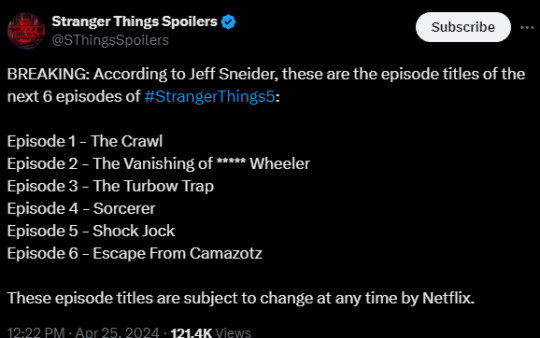
Vanishing of Holly Wheeler?
I already shared that I think Episode 2 is Holly Wheeler: "IF this information is accurate, I'm guessing the missing Wheeler is Holly. They have a new actress to play her. I think they're returning to s1 themes and the horror of a child being in danger is one thing they might get back to. The 1st episode would give them time to make her a character we care about. (And probably stabilize the situation at the end of s4.) It would also consume the entire Wheeler family into getting Holly back. Karen will be beside herself. Nancy will be tough and take charge. Will will have to unearth his memories of the Upside Down, and possibly use his connection, to help MIKE and NANCY get back their little sister. One possible road to BYLER is Will having to reexperience his trauma and possibly sacrifice himself to help his best friend."
Camazotz
I see a LOT of interest in episode 6 title "Escape from Camazotz"... I think for ANY speculation we HAVE to go to where our D&D nerds would go, which is the Dungeons & Dragons sourcebooks in the 80s. Camazotz was published in Deities & Demigods for Advanced Dungeons & Dragons (1980). It is the "bat god," so we're probably going to see it tied to the demobats.
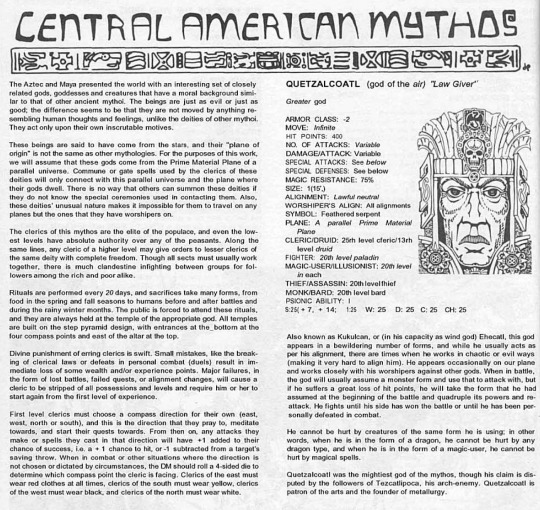

We learn from Deities & Demigods that the Aztec and Mayan gods have "inscrutable motives"... which is ON BRAND for the Cthulhu inspirations of Stranger Things. These gods come from a "parallel universe." Clerics "are the elite of the populace," and are able to cast "commune or gate spells" to connect the planes together. ("Will the Wise" has been the cleric of the party... perhaps he is a cleric?)
Also, these gods "unusual nature makes it impossible for them to travel on any planes but the ones that they have worshipers on." Maybe Vecna needed to have a host on the "Right Side Up", to take form here, which is very consistent with the s2 and s3 plotlines.
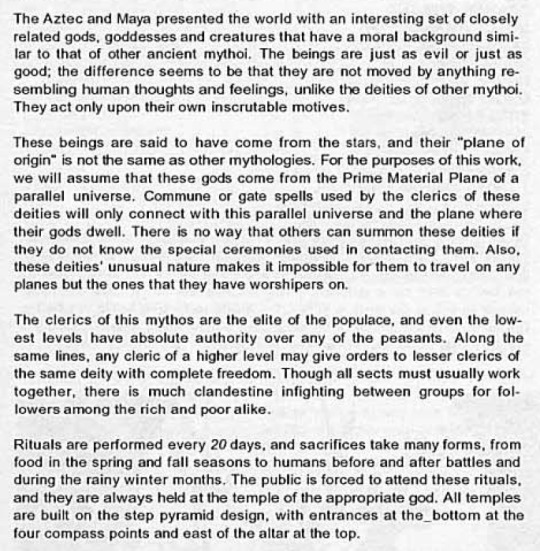
The clerics perform human sacrifices... maybe another theme in s5??
But perhaps JUST as important, the adventure D&D module Hidden Shrine of Tomoachan (1980) involved an ancient temple dedicated to Camazotz. Odds are that our heroes will be trying to escape from a "temple" within the Upside Down. According to the Wikipedia article about this adventure, it is "full of tricks and traps".
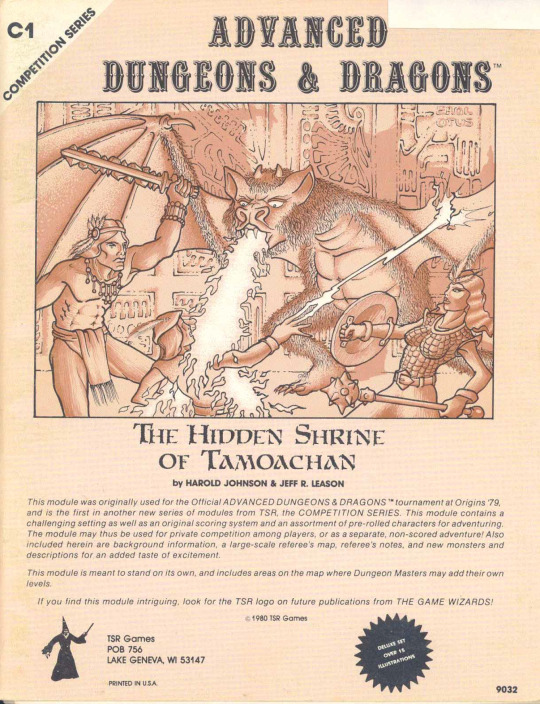

As a "tournament module," meaning for competition purposes, and it was EXPECTED that heroes died in it because it was so deadly. The goal "is to get out of the ruins before time runs out." The lower levels (where the heroes begin) have a poisonous gas that slowly kill them. Also it is very unstable, spells will cause a collapse. If El were caught in it, it might be dangerous to use her powers.
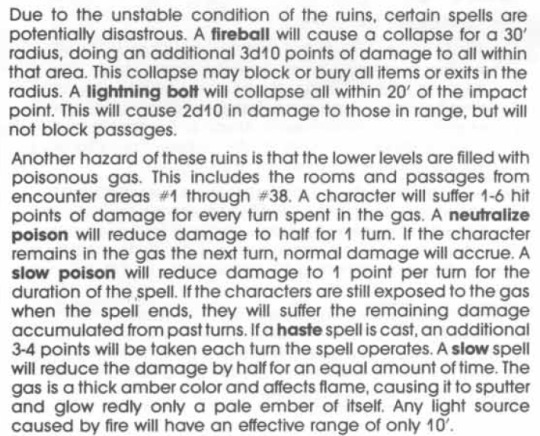
This adventure debuted the gibbering mouther, a very distinct D&D monster that is VERY reminiscent of the s3 Flayer and would be VERY on-theme for Stranger Things:

The Sorcerer
Also, Episode 5 is titled "The Sorcerer." Sorcerer was not a class yet in D&D in the late 1980s. (The idea that Sorcerers have innate arcane power versus Wizards who study magic, was not invented yet until 2000.) Sorcerer was one of the many titles that Magic Users had (next to Wizard). Sorcerers had less power than Wizards. They were 9th level, while Wizards were 11th level:

It is already established that El is "the Wizard." Maybe there's another person with powers in season 5 which are less developed? If so, the most logical choice would be Will. It's confirmed that this season will focus on him. Although he's a "cleric" in their D&D game, maaaaybe he finds out he has new abilities. There was a reason Vecna didn't kill in season 1, and who has had "truesight" since.
That's what I can find for now! There's a lot of interesting traps and puzzles, with illustrations, from the adventure. But it's hard to predict what else (if anything) they might borrow from it! The aspect of escaping, and the poison gas and the timer, are probably what we can most rely on!
P.S. I mainly blog about Byler, but I thought my D&D knowledge would be useful for this one. If interested, follow and read my blog! I have so much to say!
#stranger things#D&D#st5#st5 speculation#camazotz#escape from camazotz#sorcerer#vanishing of holly wheeler#byler
48 notes
·
View notes
Text
How evil is arlecchino and what is she cooking
As of 4.2, I’m really curious what they’re planning with Arlecchino as a character, especially as a villain/antagonist/morally dubious character, and how far/which direction they may go with that
Intuitively my impression is we’ll see her do something way more “villainous” than she presents herself as being for majority of Fontaine’s AQ in front of us right—(which isn’t a surprise given that, you know, Arlecchino nor the House of Hearth have never been presented as 110% ethical LOL) but I find myself not being in complete agreement with most analysis or speculation threads I see about Arlecchino’s morality and the like, level of sinister people seem to ascribe to her.
Idk how to put it, especially in regards to her children I do agree they are not a wholesome found family, that Arlecchino is not above pulling strings or using them for her own ulterior motives, but I kind of hesitate on the idea she only cares about the Hearth children as a means to the end/things she can control and there’s nothing else going on with her characterization wise there. I’m not saying that impression seems remotely unreasonable or unfounded, but just that it feels there’s something intentionally missing in how we are supposed to conceptualize her as a person
My main reasoning for this hunch is the fact they have not elaborated on Arlecchino and the previous Knave—who Arlecchino is stated to have taken over the position from by force. The extra tidbits I think about are that 1) Arlecchino was previously an orphan in the Hearth 2) the previous Knave is described as way, way crueler to the children of than Heart than Arlecchino was from when she took control of the House
Often, people’s major indicators that the House of the Hearth is kind of super fucked up are the NPCs we meet in world quests who are part of it and clearly suffering. But one thing I haven’t ever seen people mention w this that i think is a very interesting detail is, in The Very Special Fortune Slip Inazuma worldquest, where we stop this House of Hearth guy (Efim Snezhevich) from manufacturing tension between Watasumi/the Shogunate to restart the war with his other Hearth subordinates, at the end of the quest we get this dialogue that reveals he had been acting under the previous Knave’s directives:
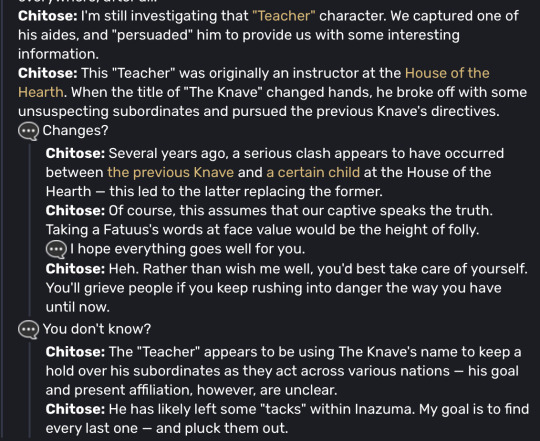
It’s also mentioned he’s employing this plan in an attempt to “rebuild the prestige of the Knave” following Signora’s death, iirc? Now, see, the dialogue itself says that this is “assuming our captive is telling the truth” so who knows what’s really going on, but I find this a really odd/interesting thing to highlight. I’m a bit fuzzy on other world quests with Hearth members, and am not saying none of them were acting and subsequently being treated poorly by our Arlecchino, but like, this gives me a lot of questions especially when paired with implications this previous Knave seemed to be way worse
Like, what drove Arlecchino to take over? How unexpected and controversial was this within the House? Assuming the above information is all true it definitely says something this guy went rogue and acted on what the previous Knave would want and didn’t think our Arlecchino would greenlight it, which does feel consistent with the previous Knave being described as basically worse & crueler than our Arlecchino. It also makes me question how much house of hearth things we’ve seen outside the main story are the work of our Arlecchino or if there’s a bigger divide of loyalty. Heck, I could be wrong but it doesn’t even seem like we know if the previous Knave is dead or not
This isn’t me saying Arlecchino couldn’t possibly be treating hearth children worse than she wants us to know, especially ones who aren’t her “favorites” the way the fontaine trio seem to be, but I really don’t feel sure about making a solid conclusion of her exact level of malice the way ppl r generally understanding it rn when it feels there’s going to be more about her. Just the idea of she, as a Hearth child, clashed with the previous leader who was known for being cruel, overtook their position and took on less harsh methods of leading that made at least some members with more power/possible closer proximity to the previous Knave go rogue and try to commit atrocities in the previous Knave’s name…I feel this leaves a lot of room to suggest there’s more going on with how Arlecchino is as a person
I don’t mind if she’s just very evil and deceptive bc if she totally had me fall for thinking she was less evil than she actually was that’s fun tbh. But I feel people suggest that’s all her character could be with no degree of like, “sympatheticness” or deep grey morality and that if her character did go there it would be automatically poor writing and genshin walking back on making a truly evil woman when IDK. I feel you can claim at this point they have left it open ended and it’s never been completely confirmed she’s pure evil. Also sometimes I just get a hunch and feel cautiously confident in Genshin executing certain characters well. Not all characters, just certain ones. Especially given Fontaine’s character writing being very good and a character like Lyney feeling very solid to me when any development with Arlecchino would likely involve him and his siblings as well, I honestly feel open to the idea of Arlecchino being satisfyingly written to be both villainous/morally dubious but “sympathetic/likable as a person” in ways outside of just her ruthlessness if that makes sense
If I’m wrong/they drop the ball with it more than I anticipate I’ll eat my hat but I am pretty excited about her character and which way they decide to go with it. I will say the only potential impression I have of where they’ll go with her has been wondering if it will go in a “cycles of abuse” direction—I’d be surprised if they ever elaborated on Arlecchino’s character especially in how she feels about things and her also growing up as an exploited child of the hearth wasn’t relevant
#arlecchino#see my track record with said hunch with when I feel I should let genshin cook has been#for months truthing my vision of xiao’s speififc brand of internalized dehumanization induced suicidal ideation#and how genshin will one day he will get another quest of sorts thst develops his character towards#the idea he’s allowed to live and enjoy people’s company and this will likely#also come with following through on yaksha lore and when they do this they will do him SO well and it will be peak genshin quest#all of this Months before the existence of perilous trails was even rumored#and then I was soo stubborn xiao would show up in 2023 lantern rite w more character introspection to follow up PT#and also from the first fontsine teaser I was in the trenches for furina bc I felt so confident#the main storyline would handle her very well & if genshin went anywhere near the direction of her#not being a ‘true archon’ & ppl were Wrong if they thought genshin woudlnt take her seriously#and HAHA. WWOOWOOWOWOEOEOOEOEE#I have also been sent into hysteria multiple times bc genshin keeps canonizing my exact ideas of my favorite character dynamics#and often exceeding my expectations that I thought were jsut wishful thinking#yes I predicted exactly how xiao would interact w Venti & zhongli on screen yes I predicted#the exact nature of hat radish friendship no I was wiped out on the floor#by nahida enrolling wanderer in college & calling him hat guy & zhongli saving xiao’s life#& xiao having hardcore social anxiety from zhongven flirting with each other st the dinner table#this sounds so conceited. see I often don’t know What genshin is cooking but k feel sure in knowing when soemthing is going to be#a shitshow or mediocre or when we need to let them cook. even if it takes 6+ months#TRUST ME <— guy who has been waiting on genshin to cook for several characters for multiple years and is still sure I will get my food#am I crazy. yes. am I also often right when I have hunches on when genshin is going to suck and when it’s going to be good esp character#writing wise. often yes#one day I will annihilate genshined impact with my bare hands#genshin#fern.txt#fandomferns
71 notes
·
View notes
Text

Obsidian Templates For Writers
it is once again Posting About Obsidian time, and I figured I'd do something useful and share some of the templates I've been using in the Valloroth Vault!
I like using templates because then all my info gets organised in a consistent way, which makes using it way easier. Some of these do use a bit of css to make parts work, which I'll link with the template and explain how to use at the end of the post.
Also, some of these shamelessly just riff on the structure of the Forgotten Realms wiki pages because i am who i am and i spend way too much time looking up lore for dungeons and dragons.
Included below the cut are templates with examples for the following:
Character profile (wiki style page)
Character profile (for writing with)
Country
Organisation/Group
Chapter outline
Let's go!
Character Page (wiki style)
pastebin / infobox css

This is the main profile I use for characters! Here you can see the markdown, the preview, and a fully filled out example. For minor characters, I cut the sections I don't need, but so far for major characters, I find that filling out all these sections is very helpful.
At the top of the page you can see the metadata I use, which is what I've settled on after a few iterations as 'the things I actually want to be able to see and use'. Feel free to adjust/adapt to whatever is actually useful to you!
The cssclass is some tweaks I have for my personal obsidian css, so I've left the classes out in the template for you to add whatever you'd like yourself, or you can remove it entirely.
The 's' tag is to remind me to tag new character with the series they're in, e.g. Aliyne would be 's/rp' because she's from the Renegade Prince series. The 'character-sheet' tag is so I can filter out character sheets in searches or queries if I need to.
Character Page (for writing with)
pastebin

This is the page I use for tracking a character within a project. I need all the wiki info for character building, but I don't want my plot threads, character arcs, motivations, and other key info lost and buried in there whilst I'm working! This lets me pull out that info into a shorter, easier to read section.
The double :: are for use with the dataview plugin, because that way I can pull them into tables to track with the rest of my book information

Here's an in-use example with Aliyne again. The 'br' tags are to get things to show up on seperate lines whilst still counting as one line for pulling into dataview, so if you're not using dataview you don't have to use those
Country Template
pastebin / infobox css
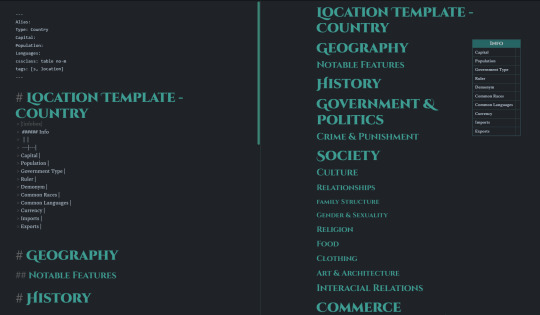
I use the same basic kind of template for all locations, just removing or adding sections as I need. I don't always fill all of these out, it depends on how important the place is and how much worldbuilding/research I feel like doing!
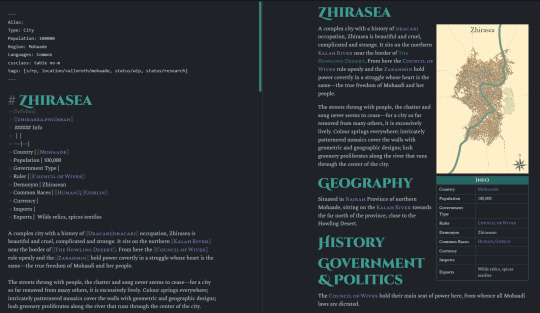
And here's an in-use example, with Zhirasea (very much still wip). You can see how I use tags for organisation here: location and sublocation, and the status of the note. I never use a 'done' tag because it's never done. When something's ready I just use 'active'.
I have a variant of the template for regions, settlements, and buildings as well, just with less categories in each as needed, and then I log which kind it is under the 'type' field in the metadata.
Organisation / Group Template
pastebin / infobox css
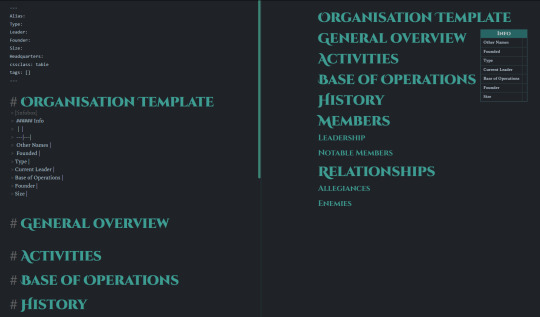
This one's for fictional organisations! Heavily lifted from the FR wiki but you know what? It works.

Here's an in-use example, with my crime syndicate, the Zarahmin! You can see I added a collapsible callout with the 'Zarahmin Code' in it as well, since this particular organisation actually has a code of conduct.
Chapter Outline
pastebin

This is a fun one - my current chapter outline! This is very much a living document, but it's what I've found useful for this project so far. It combines a few different outlining methods (MICE threads, Promise/Progress/Payoff, One Sentence Summary) as well as leaving me space to be flexible.
The template contains questions and explanations for various sections of the outline, to remind me what I'm looking for/need to fill in.
I found this most useful after finishing a first draft with a rough outline. It's very much a thing I recommend doing for a second draft, since otherwise you'll bog yourself down trying to have all the details in place.
Here's an example of filled out meta info for the prologue of Renegade Prince:

(I use the section with 'Arcs' to list plot tags using :: dataview queries so I can pull them into tables, but again, if you're not using dataview, you can ignore that part!)
How to use the CSS Snippets
The infobox snippet is part of the ITS theme if you use it, or you can install it seperately by doing the following:
Go to this link and download the 'Callouts.css' file
In obsidian, go to settings -> apperance -> CSS snippets, and open the folder with the little folder icon
Paste the 'callouts.css' into that folder
Hit the refresh option in obsidian settings, and toggle the new snippet to on
it is now installed! any callout you insert with [!infobox] will now display with the infobox settings. if you want to tweak how it looks, you can poke around in the css file and see what happens
Oh boy that was another long post - I hope this was useful! As always, if you have any questions about the templates, or obsidian, feel free to shoot me a message.
#obsidian md#obsidian.md#writeblr#writing program#writing app#writing template#obsidian templates#character template#writing#if you have your own templates please share them i love seeing new layouts
122 notes
·
View notes
Note
Thoughts on Alastor so far? He’s probably my favorite character in HH, but after the poor writing that came from HB episodes 3 and 4, one part of me is worried the crew will ruin him when Hazbin Hotel eventually starts getting episodes.
(This ask was sent in a long time ago, sorry it took me until now to finally answer.)
Spoilers for Season 1 of Hazbin
I was almost certain they were going to mess up Alastor's character horribly. I did not have much faith in the writing for Hazbin. With Alastor specifically, there is a lot of room for error in terms of characterization, and I found personally that he was the trickiest one of the cast to write correctly and consistently. Between fandom woobifying, conflicting information, and a lack of insight into his motivations, Alastor's character has seen many varying interpretations over the years.
Well, now that the show is actually airing, I have to say that I don't think they ruined Alastor's character: they actually did a great job with him. I do understand the perspective of those who disagree with me, and miss the pilot characterization. But as a long-time Alastor fan, I feel the writers gave him surprising depth and found his flaws intriguing.
Pilot Alastor (Ed Bosco and Gabriel Brown) was goofier, more lighthearted, chattier, and more openly affectionate. Nothing really seemed to rattle him, and direct signs of his deviousness were minimal. He had more extensive radio sound effects and was truly a product of the thirties (reflected in dialogue through specific phrases), but had a smaller range of emotional expression as a result of his "radio broadcaster" persona. Husk seemed to owe him a favor, as opposed to Alastor owning his soul outright - "I suppose I could cash in a few favors" - and this was a common fan interpretation, not just a misinterpretation on my part.
Series Alastor (Amir Talai) is more temperamental, prideful, openly intimidating, reserved, and less prone to rambling. The radio effects are minimal unless needed for dramatic effect; his smile is sharper and less genuine. We see a wider range of emotions (frustration, anger, fear) from this Alastor, all with the smile still in place. There's a certain coldness about him, from his demeanor towards Husk (whom he keeps as a pet in an abusive soul contract) and his annoyance at others (Charlie, the Egg Bois, Sir Pentious) that contrasts his superficial warmth from the pilot.
It's a subtle but definitely noticeable set of changes for a character many fans had grown attached to. And yet, I found I liked the new version of Alastor, and felt that the writers added depth to a character who could have easily been a flat, all-powerful "Gary Stu" archetype. We see how these character flaws come back to bite him in the finale and how his limitations imposed by his deal set up his character for other, more interesting developments. Him having a breakdown and then immediately returning to the others with a smile on his face like everything is fine? That's the kind of Alastor that I knew was in there, and it was amazing to actually see it on screen. (I always figured he was a mess beneath the mask. That last scene was not shocking for me the way it was for many others.)
This fascinating characterization hasn't stopped other people from saying they "miss the pilot Alastor" and "wish he was still like that". I get that, I really do. If pilot Alastor was how Alastor wanted to be seen by others, series Alastor shows us who he really is. Unsurprisingly, not everyone is going to like that.
Side note: Ed and Gabriel did a perfect job voicing Alastor. Amir is also doing very nice work. I still miss the pilot voices, even though I like the voice he has now.
#hazbin critical#still not sure if that is the right tag for this?#Hazbin hotel#alastor#pilot alastor#series alastor#responding to criticism#alastor character analysis#alastor analysis#asks
24 notes
·
View notes
Text
Okay so here’s my piece on the lighting in alex rider
Alright. So s1e7 happens, you think everything went well and it’s all wrapped up. But at the end of it, they shows alex still in the school, looking roughed up and we realize that he ALSO had a clone (which, though hinted at through the episodes, I at least had forgotten about bc come on! everything is good now!) and you realize that you can’t tell, of the two (one left at the school, one taken home) who is the clone and who is the original.
What I found really fascinating was how they portrayed the two to play up that confusion. The one left at the school is consistently shown in well lit scenes. I'm pretty sure he’s always in bright lighting or at least with no obvious shadows. In the sequence where he goes from the rubble to the study, inside the school itself, there aren’t any ominous shadows or shots that stand out to me. Instead, there are big windows with lots of light from outside. It just feels eerie in the fact that he’s alone and all the evil inhabitants are gone (presumably). When he gets outside, he wears a bright yellow coat and the snow is bright white and makes the scenes themselves even lighter.
On the other hand, the Alex they brought home is shown consistently in darkness. In e7, he looks at the helicopter that comes to save them with a blank, confused and almost cynical look. When he gets back home Jack and Tom are there to greet him, but he ignores them, goes to his room, and closes the door in their faces. He is consistently facing away from the camera, or his face is entirely in shadow so you can’t see his expression.
It makes my brain go a little wild and I think it was a pretty ingenious thing to do, because one, if there hadn’t been a clone, it would be a pretty smart and realistic way to convey the idea of Alex coming home and not being able reconcile his old life and what he’s lived through bc they’re so conflicting and he has trauma and it’s like this veil has been lifted; everything about him is different but everyone expects him to go back to normal and he can’t.
But because there is a clone, because of the double that was left behind, those lighting choices cast doubt over whether or not that’s the real Alex. Is he acting closed off and different because he’s a different person metaphorically or literally?
Especially because we know the clones are evil, the choice to put one in darkness and not show his face and the other in bright scenes and colors (along with the scene where Tom informs Alex about the dance and the fact that generally the clone plot twist implies that the character you’ve mostly been watching isn’t who you thought he was), it adds up to making you think they got switched and Alex (good guy, well lit) has been left behind. The clone (dark, shadowy, motive unclear) has been taken in in his place.
But then you see the one who was left behind bash someone on the head with a rock and steal his car (still in the brightly lit shots) and you realize that you really cannot tell who is who. Because the storytelling of the lighting and shot angles is telling you one thing, but the actions are telling you something completely different. It forces you to confront the idea that maybe you didn’t really know Alex at all and maybe he always had that in him, because the one in England is obviously the evil one right? But Alex is the protagonist, he couldn’t have done that. And yet….
I go wild for the use of lighting as a physical plot device, because it isn’t really something I’ve seen before. Usually lighting in film (from what I’ve seen) only implies things about characters (dark=evil, unclear faces=hiding thoughts) or places (not well lit=bad things will happen/jumpscares/hiding things from the audience and characters) the way the music does. It’s all in the background. It isn’t particularly noticeable, because it generally fits with the direction the atory is taking. But the way it is used here as a purposeful misdirection is fascinating. Somebody thought we could use this and they did and it paid off. It’s a very masterful way to take advantage of the type of media they’re using to convey the story. Actually, I think that’s really it. It’s a brilliant adaptation of book to tv, because it conveys the same confusion in a new format in ways you don’t usually see in book adaptations.
Usually adaptations have trouble going from words to a screen because they’re two separate kinds of media and very different ways to communicate. They’re basically two separate languages. A lot of times, trying to get the book’s message through to film doesn’t work out because in books, you can read the actual thoughts and feelings of the characters. On tv, you have to figure out a way to convey that through pictures and dialogue. And this segment specifically of the alex rider show did it brilliantly, because they saw the options at their disposal and figured out a way to translate writing to film with specific components of film that make it make sense in a visual context.
#alex rider#rambling as I do#media analysis#lighting#alex rider tv#BIG FAN of that sequence from ep 7 to ep 8#and ep 8 in general#pretty sure my entire family and immediate friend group heard this exact rant about five times#yeah this was fun to write out i love figuring out my thoughts
30 notes
·
View notes